Contents
YASAKA-jinja Shrine
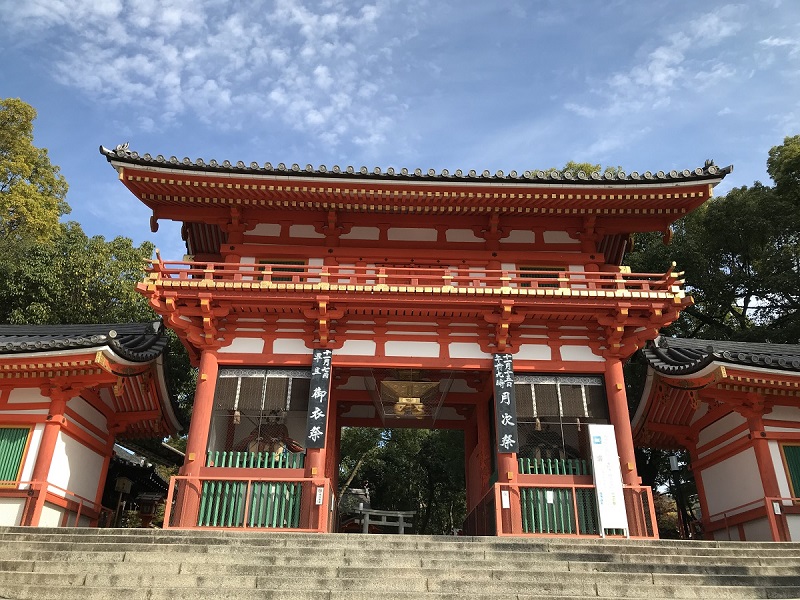
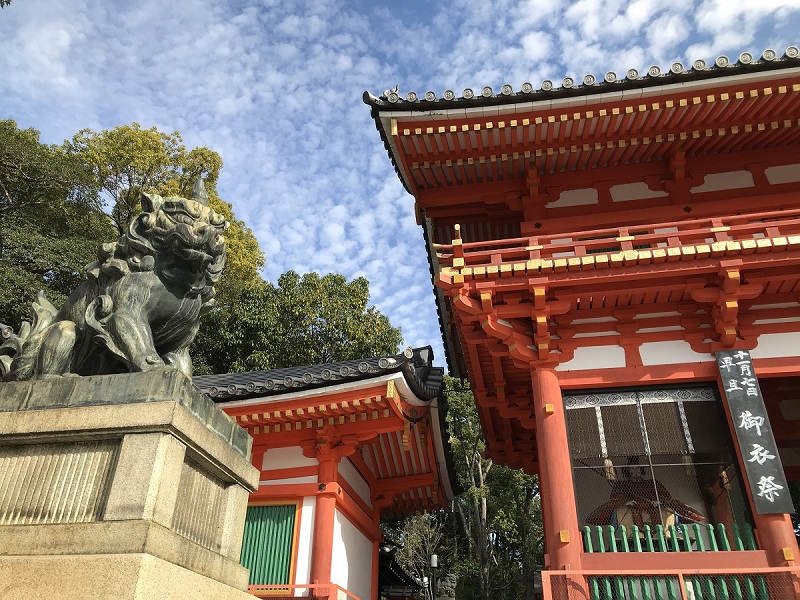
Yasaka Shrine is known as the nickname of “Gion-san”. It is close to Gion, which is flourished as the gate town of Yasaka Shrine. Gion is famous for Hanamachi (entertainment area and geisha district). The area around the shrine is always crowded with tourists.
Yasaka Shrine is a very popular shrine that is visited by about a million worshipers for New Year’s holidays. The benefits are Elimination of Disaster, Prosperous Business, Beauty, etc. In addition, there are many deities surrounding the main shrine. I will introduce some deities.
The shrine was called Gion Shrine because the main deity is the guardian deity of Gion-shoja (it is a temple located in the Gion forest in India.), the birthplace of Buddha. It was renamed Yasaka Shrine in 1868 (the first year of the Meiji era).
History and the main deities
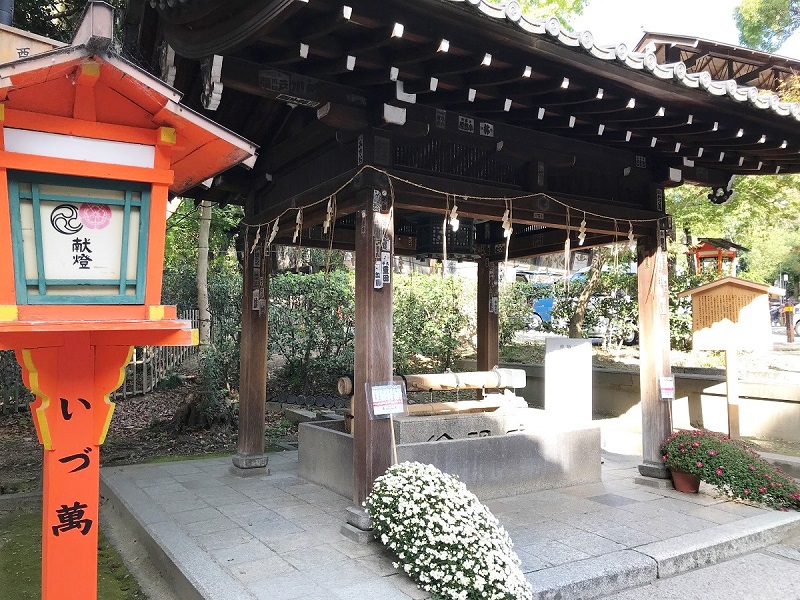
The main deities are Susanoo-no-Mikoto, His wife, Kushiinadahime no Mikoto and eight children, Yahashira no Mikogami. Susanoo-no-Mikoto helped the youngest daughter of an elderly couple who was about to be swallowed by Yamata no Orochi in the land of Izumo, and he married the daughter named Kushiinadahime.
It is said that the founding began in 656 (in the second year of Emperor Saimei), when the envoy from Goguryeo, ancient Korea, enshrined Susanoo-no-Mikoto, the guardian deity from Gozu Mountain of Shiragi (the Silla dynasty).
The shrine was worshiped historical military generals such as Taira no Kiyomori and Minamoto no Yoritomo. And during the Edo period, the main shrine and tower gate were rebuilt by the Tokugawa family.
Honden, a power spot
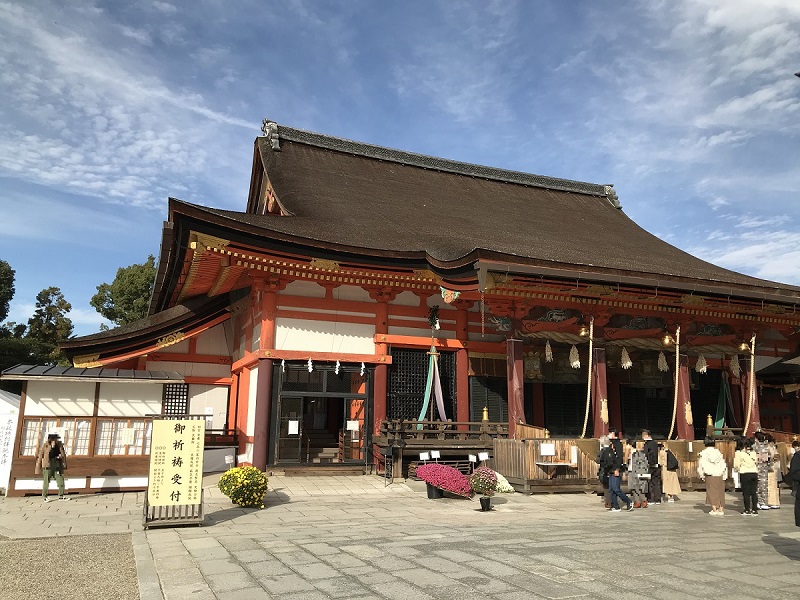
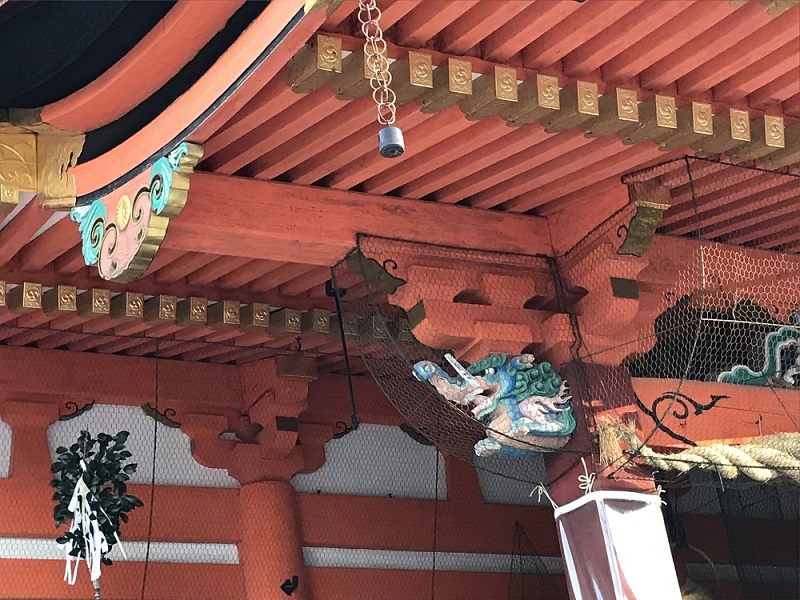
Yasaka-jinja Shrine is also famous as a power spot.
It is said that there is Ryuketsu under the main hall (Honden). Feng Shui defines Ryuketsu as a place where the energy of the earth brows up.
The main hall, which was rebuilt in 1654, is “Gion-style” structure. The main hall (Honden) and the worship hall (Haiden) are covered with one roof. It is designated as a national important cultural property.
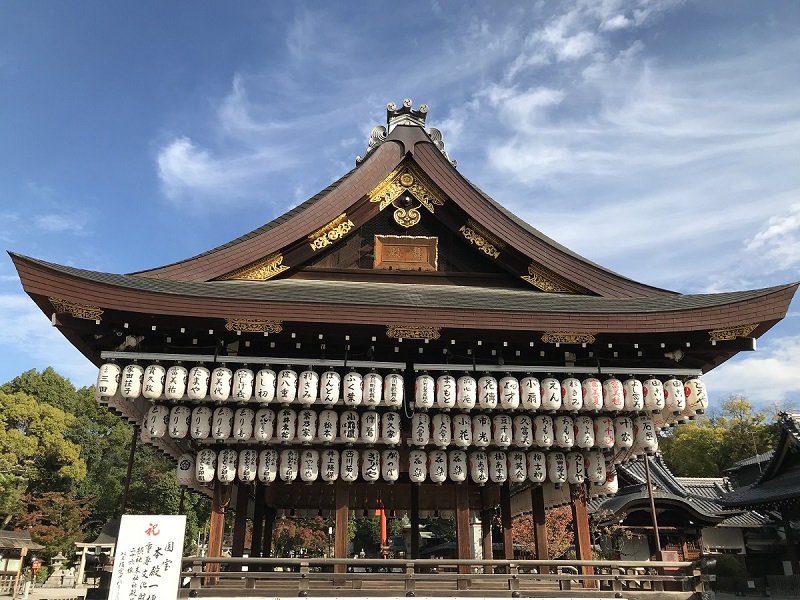
At the Buden, where the dedication events are held, the lanterns are lit at night, and you can enjoy a different atmosphere from the daytime.
■Gion Matsuri
Kyoto Gion Matsuri Festival, which has the tradition of over 1100 years, is held every summer at the shrine. The beginning of the festival came from praying for the elimination of the epidemic that was prevalent in the capital of Kyoto. In the middle of the Heian period, it became large and crowded with a lot of people.
West Romon, two-story gate

At the end of Shijo-dori, the vermilion west tower gate welcomes you. It is designated as an important cultural property. It is a shooting spot for tourists. The illuminated tower gate at night is also wonderful.
A god of match-making : OKUNI-NUSHI-sha


The deity is Okuninushi no Mikoto, who is also the deity of Izumo Taisha Shrine. Since ancient times, it has been worshiped as the god of match-making for Gion. It is said that it would be beneficial to put a piece of paper with your wish on the cute rabbit.
DAIJINGU-sha
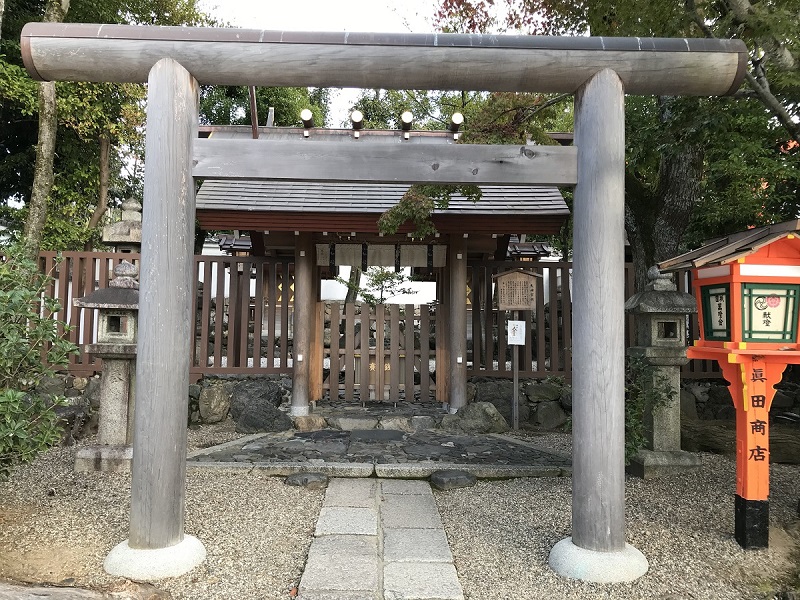
It enshrines Amaterasu Omikami (the elder sister of Susanoo), the ancestor deity of the imperial family, and Toyouke Dai-jingu. There are benefits such as healthy longevity and family safety and so on.
Utsukushigozen-sha

As the name implies, the Three Goddesses of Munakata are enshrined as a god that symbolizes beauty. Since ancient times, it has been worshiped as a god of beauty by geisha and maiko in Gion and other women who want to be beautiful. It seems that it is beneficial to put this springing beauty water on your skin.
Kitamuki Ebisu Shrine


It’s the god of good fortune, the god of prosperous business, who is called Ebessan. It was designated as an important cultural property by the construction of 1646. Since it was built facing north, it was named Kitamuki (North) Ebisu Shrine.
EKI-jinja Shrine

The deity is Somin Shorai no Mikoto, the benefit is to get rid of disasters and bring good fortune. When Susanoo-no-Mikoto traveled, he was treated warmly at meal by Somin Shorai. He was delighted with that sincerity and promised that when they say “Somin Shorai’s offspring”, they would be protected from disasters in the future.
Shinme-sha
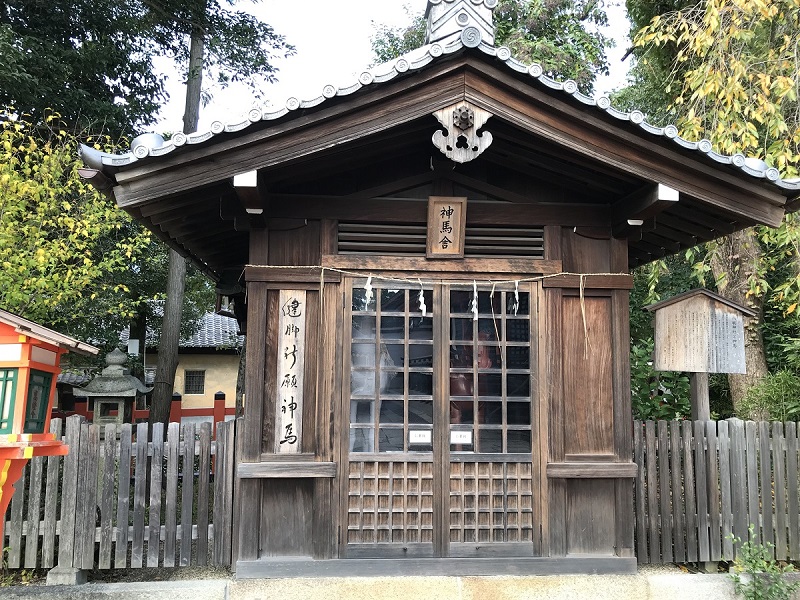
Shinme, Sacred horses, were dedicated to God at Yasaka shrine when praying from the early Heian period to around the Muromachi period. They were first dedicated by the imperial court in 920, and were dedicated by the shogunate during the Muromachi period. It seems that Shinme were actually owned until the early Meiji era, and now, two wooden Shinme are enshrined in this Shinme-sha. It was said that when you see Hakuba, white horse, on New Year’s Day, you will get rid of evil all year round.
Location
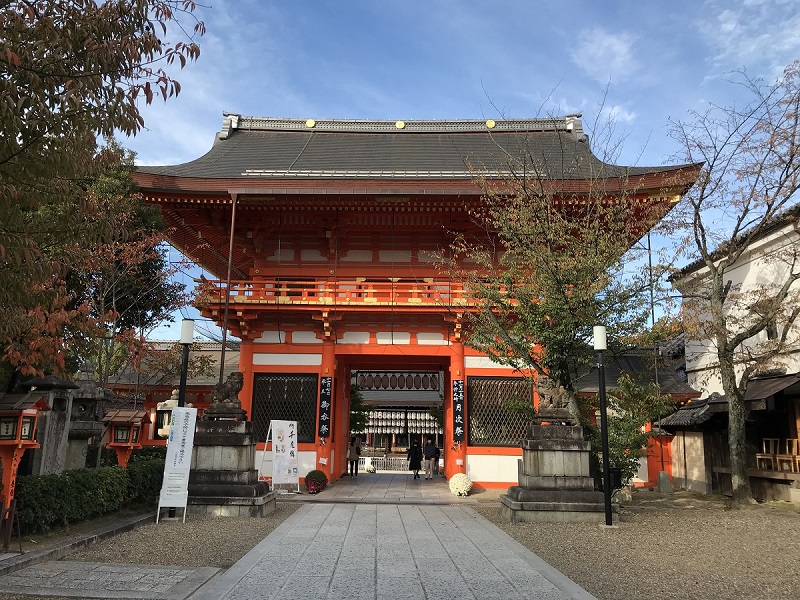
If you leave the shrine from this south tower gate, you will reach the road leading to Yasaka Pagoda. It is a standard walking course to go to Kiyomizu-dera Temple while walking along this alley.
It is a short distance from the city bus stop “Gion”.
7 minutes walk from Gion Shijo Station on the Keihan Line.
10 minutes walk from Shijo Kawaramachi Station on the Hankyu Line.
Click here for information of KIYOMIZU-dera Temple.